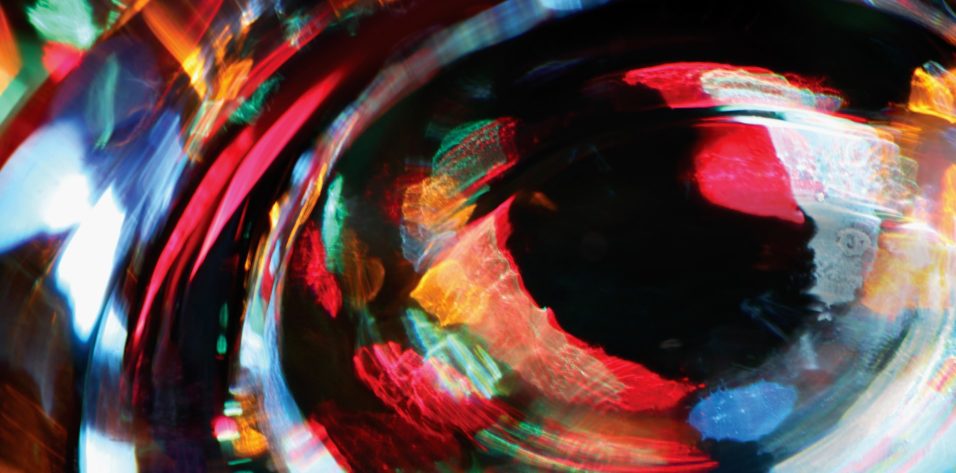
Estimates by Market Scope indicate that approximately 2.1 billion people worldwide are currently affected by presbyopia. As we know from the patients we see in our practices, presbyopia is a major source of motivation for refractive surgery, mainly because nonsurgical options can impede patients’ daily activities. This article focuses on cornea-based surgical solutions, but the other options discussed elsewhere in this issue include lens-based and sclera-based surgical correction of presbyopia.
PREOPERATIVE ASSESSMENT
When a presbyopic patient presents with the desire to achieve spectacle independence, the first thing I do is evaluate the patient’s condition and the lens transparency using subjective and objective techniques. Here are some typical tests that I perform:
- Analysis with the HD Analyzer (Visiometrics) to evaluate ocular scatter;
- Tomography with the Pentacam (Oculus Optikgeräte), paying close attention to the device’s nucleus staging score; and
- Swept-source OCT of the crystalline lens with the Anterion (Heidelberg Engineering).
If I determine that the anterior nucleus is clear, the ocular scatter index (OSI) is less than 1.5 or 2, and the patient has no visual symptoms of cataract, then I consider this a clear lens that is no longer able to achieve accommodation. It is in these patients that cornea-based refractive surgery is the most appropriate choice. On the other hand, if the patient acknowledges that he or she has difficulty driving at night or notices glare, the OSI is more than 2, and opacification of the lens is present, then I would discuss the possibility of a lens-based procedure with multifocal IOL implantation.
CORNEAL INLAYS
One method of presbyopia correction at the corneal plane is by implanting an inlay in a corneal pocket over the visual axis. Today, the only corneal inlay that is still available is the Kamra (CorneaGen). When patients are selected carefully and their eyes have a healthy tear film, cornea, posterior media, and macula, the inlay can improve monocular distance and near visual acuity.1
Typically, a slightly myopic refractive target (-0.75 D) is preferred in corneal inlay patients. This can be achieved by laser vision correction prior to placement of the inlay. Further, placement of the inlay must be done posteriorly in the stroma, about 250 μm from the endothelium, in order to avoid development of haze. This is due to the lower density of keratocytes in the posterior stroma. Patients must be monitored for the development of haze or a refractive shift over time.
I have implanted the Kamra corneal inlay in some carefully selected patients; however, the number of these procedures that I perform currently is minimal.
LASER VISION CORRECTION
My preferred corneal solution for the aging lens is LASIK, but other laser-based procedures that can be used for presbyopia correction include PRK and SMILE. In brief, hyperopes are best suited for multifocal ablation and myopes for monofocal ablation. Ametropes are the most difficult patients to treat with a corneal solution. Therefore, for myopes I prefer monovision-based techniques, and for hyperopes I prefer multifocal-based techniques.
Myopic LASIK. In myopic patients, mini-monovision or blended vision works well. In this procedure, I perform a full correction for distance vision on the dominant eye and a full correction of near vision in the nondominant eye, leaving a slight amount of myopia in the nondominant eye to ensure good quality near vision. In younger patients, a good near target is -0.75 D; in older patients, it is better to target -1.75 D or more. A preoperative contact lens trial is recommended to test the patient’s suitability to monovision.
Hyperopic LASIK. For hyperopes, rather than a full distance or near correction, I usually do some manipulation of the asphericity of the cornea in order to create a blend. For example, I may aim for a balance between distance and intermediate vision in the dominant eye, and near and intermediate vision in the nondominant eye. Ideally, this split could be customized for each patient. Creating a hyperopic profile in this aspheric, multifocal manner provides the patient with increased depth of focus, and it helps the patient to achieve better intermediate vision.
With an aspheric treatment, the patient ends up with more distance vision than he or she would have had with a monofocal ablation on the nondominant eye. Reinforcing the asphericity with the ablation enhances multifocality and depths of focus, so it achieves a kind of multifocal outcome. I have developed an aspheric ablation nomogram for hyperopia and presbyopia that will be incorporated in the next version of the EX500 excimer laser (Alcon) as a treatment option named READ in some territories. Regardless of the ablation pattern the surgeon uses during LASIK, the important thing to remember is that, in the nondominant eye, you must induce some myopic correction in the pupillary area—presumably not in the periphery—in order to leave the patient with good near vision when the pupil constricts during the near accommodation reflex. Further, the ablation pattern in the dominant eye should place distance vision in the center of the pupil and near vision in the periphery in order to increase depth of focus while ensuring good uncorrected distance visual acuity. This treatment is usually done mildly, as all presbyopic LASIK treatments should aim to preserve the patient’s distance vision.
FUTURE OUTLOOK
In the future, it may be possible to correct presbyopia at the corneal plane using laser-induced refractive index changing (LIRIC; Clerio Vision). In LIRIC, a femtosecond laser is used to change refraction and increase depth of focus through the induction of multifocality or spherical aberration in the corneal tissue. One benefit of this procedure is that no incision is made into the cornea. This could provide patients with the benefits of laser vision correction while minimizing the risks associated with flaps and incisions.
CONCLUSION
Presbyopia correction is a growing area of focus in cataract and refractive surgery. In patients who are best suited for cornea-based surgical solutions to presbyopia, my preference is laser vision correction. I have found that myopic patients fare better with a mini-monovision ablation and hyperopic patients fare better with aspheric multifocal ablations. Using these approaches in properly selected patients, good patient satisfaction is easily obtainable.
1. Vukich JA, Durrie DS, Pepose JS, Thompson V, van de Pol C, Lin L. Evaluation
of the small-aperture intracorneal inlay: Three-year results from the cohort of
the U.S. Food and Drug Administration clinical trial. J Cataract Refract Surg.
2018;44(5):541-556.


